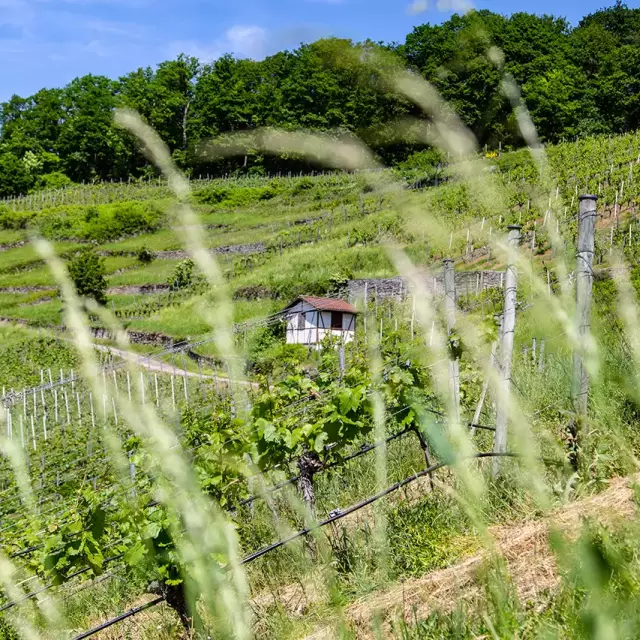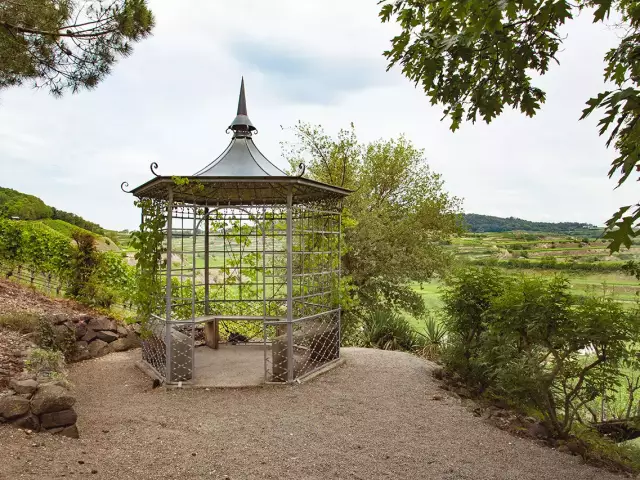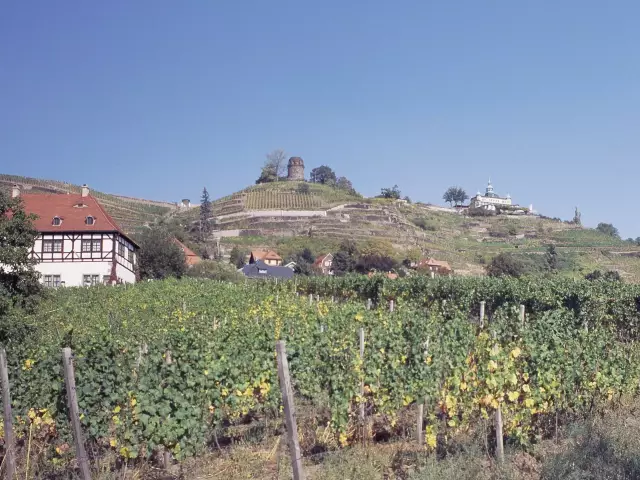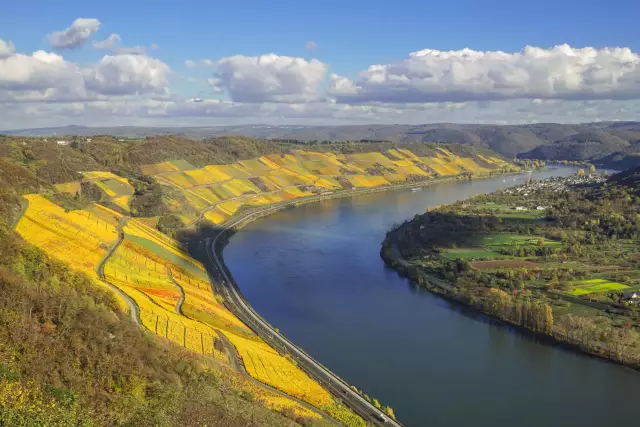Geigersberg: Historical Cultural Wine Landscape

Climate change means that many things have to be reconsidered in agriculture and viticulture. For example, does it make sense to have large monocultures that are a to pests and diseases and offer no space for native flora and fauna?
In Württemberg, a vineyard has been reconceived: situated in the Kirbachtal valley to the west of Heilbronn, a special parcel within the large Stromberg vineyard area. The Geigersberg above the Sachsenberg district of Ochsenbach was abandoned until the nineties as many areas lay fallow. However, since 1996, it has been given a new lease of life through a land consolidation process. What sounds bureaucratic is far more interesting in practice: natural dry stone walls like in the old days were skilfully rebuilt and nature conservation was taken into account. For the central question is: How can ecology and economic efficiency be optimally combined? To answer that, since 2000, there have been 30 information boards erected along a two-kilometre-long circular path that meanders between meadow orchards, wetlands, wine terraces and woods. Here, visitors can inform themselves about the issues and why this vineyard is so different from most others, all without pointing fingers, but rather inspiring enthusiasm with the many examples of successful nature and species conservation. The positive response to the guided tours and wine tastings offered is always overwhelming. One aspect that is highlighted is the transition to other grape varieties, which can be seen in the varietal garden. Where Lemberger used to grow, the Mediterranean variety Grenache is now cultivated. This is perhaps also thanks to Sachsenheim's French partner community, Valréas in the Rhône Valley. The Geigersberg is climatically well protected which is favourable for the vines. An Ochsenbach producer cultivates the vines in the Geigersberg very close to nature and uses traditional methods for vinification, including the use of spontaneous fermentation by natural yeasts which come from the vineyard. The wines are given plenty of time to mature, so there is no need for fining processes. In this way, terroir can be experienced. The fact that the resulting wines are often award winners speaks for this approach. Basically, the Geigersberg, as forward-looking as it is, is a return to a landscape management that already existed in the past. It was more small-scale then and allowed for more diversity. At the end of the circular walk, the top of the Geigerberg offers a magnificent view from the "Wengertschützenhäusle" over the Neckar region. One can reflect on the fact that even small steps are important on the way out of climate change. You just have to take them.




